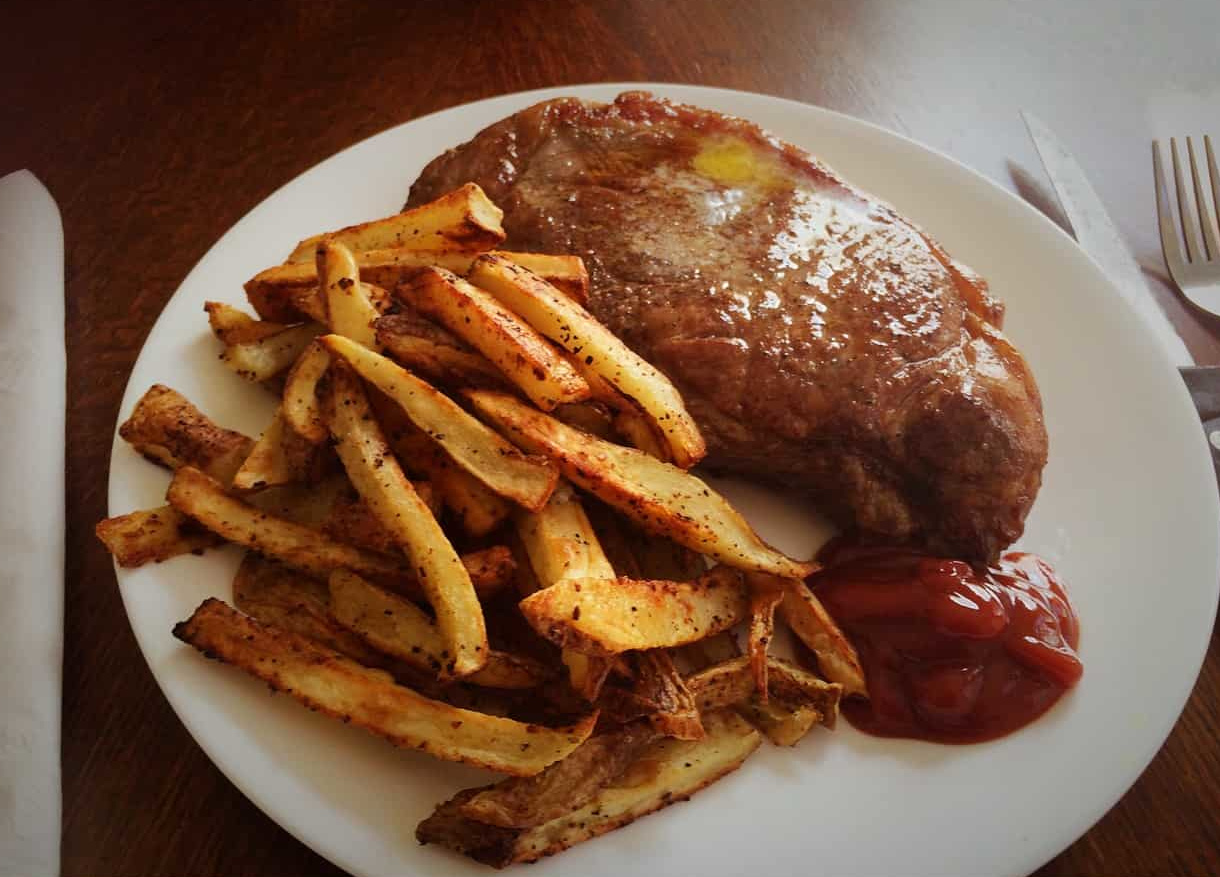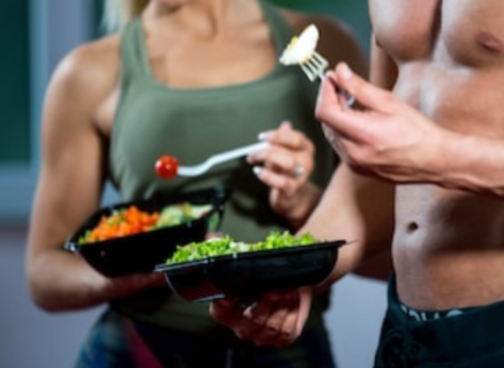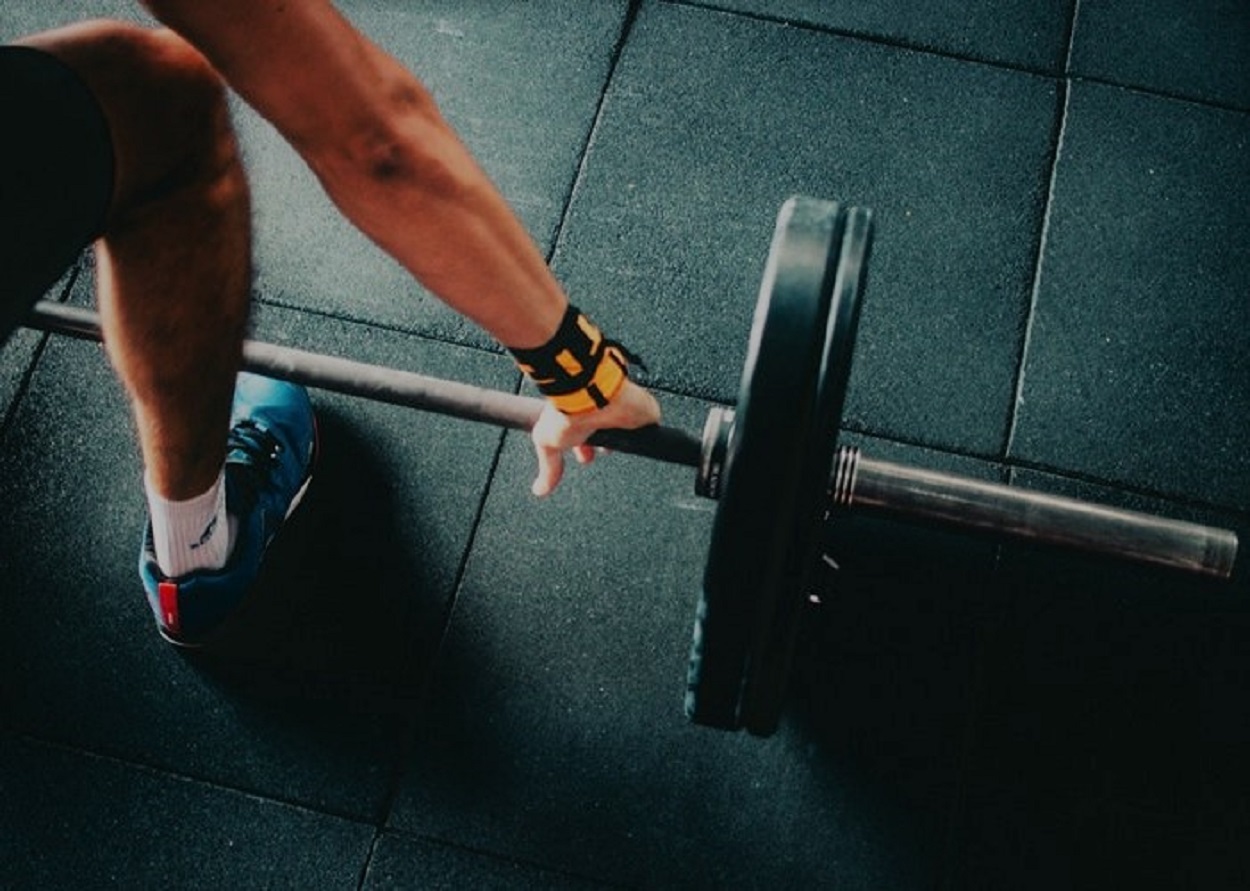Powerlifters eat what they need to eat based on the goals they’ve set for themselves. While a powerlifting diet is often either misconstrued to somehow require more protein, or less sugar, or more junk food, or any similar such nonsense, the truth is that there is no magic nutritional bullet for most powerlifters. I’d argue that other sports are similar, but that there really are sports where a specific diet is really important.
Take strongman competitions, where competitors regularly eat over 10,000 calories a day during prep in order to take advantage of the strength and muscle-building benefits of a surplus, while not having to care about extra padding. On the other hand, ultramarathoners need an extreme number of calories for their frame, most of it through easily digestible and accessible glucose.
But powerlifters who aren’t built to be super heavyweight athletes eat for one reason, and one reason only: to get as muscular as they can, while staying relatively lean. The best way to do this is through a balanced powerlifting diet. So, do powerlifters eat a lot? That’s completely relative to what you consider to be “a lot”, and it depends on the powerlifter. A woman in the 47kg category really isn’t going to eat that much by any metric. A man competing in the 105kg category fresh off a cut is likely to be eating substantially more.
Lots of Beginners are Small
So where did the idea that powerlifters must eat a lot come from? The Internet, for the most part, as well as moments of frustration from big guys tired of hearing a collection of anemic teens complain that it’s hard to gain weight.
GOMAD (a gallon of milk a day), as well as a collection of stories about giving advice to young lifters to start drizzling olive oil over whole pizzas and consuming an extra 1,000-2,000 calories to start packing on weight spread through the Internet like wildfire. Whenever a newbie would come up to a forum asking for a powerlifting diet that would help them get bigger and stronger, the first answer would usually be something along the lines of: “eat more”.
Yeah, it’s not complicated. When you’re young, lean, but relatively inactive, your appetite is probably pretty low, and your metabolism is probably pretty high. People who generally have no problem staying quite thin without caring about what they eat also typically have an easier time staying thin, due to the genetics of body fat and obesity.
While the human body is complex, we still have to obey the rules of basic physics. If you consume more food than you can use up, the extra energy is stored. Most of the time, it’s stored as fat. In the presence of the proper stimulus and a million other factors, it’s stored as fat and aids in the production of lean muscle mass.
So, to help a generation of young, skinny men struggling to put on muscle, the desperate cry of “EAT MORE” rang through the halls of the Internet for many years. Today, such advice is still heard, but it’s often tempered by “don’t get fat”.
Not Every Beginner is Skinny
It’s also not helpful advice for kids and adults who are already rather heavy, due to excess body fat. Eating a lot does NOT translate into strength. Being fat doesn’t make you any stronger. Being bigger can anecdotally improve your bench press (there are a few theories on this, including shorter range of motion caused by a thicker torso, as well as greater stability around the shoulder joint afforded by more bodyweight), but fat doesn’t move the iron. Muscle does.
As such, if you’ve heard that powerlifters eat a lot for the sake of getting big, know that, yes, smaller guys and gals should try to fill out their weight class (in muscle, not fat, through a process that can easily take well over a decade), but powerlifters don’t automatically receive a license to eat like crap just because they don’t need to care about a six-pack (but should probably still have one).
You Build Muscle Faster on a Caloric Surplus
One reason why super heavyweight powerlifters are super heavyweight powerlifters is that they have the frame and the genetics to hold more than 120kg of lean mass, and thus aren’t bound by the constraints of a weight class to try and minimize their body fat. Their powerlifting diet consists of whatever they need to eat to get unbelievably muscular.
As such, they can focus on just building as much muscle over the course of their training as possible, without needing to cut back down on body fat. This leaves you with plenty of athletes in the super heavyweight class who are clearly obese but also likely have more pure muscle than you’d guess. And, of course, there are many super heavyweights who aren’t as fat as you’d think they are, with body fat under 30 percent. Their enormous bulk is a result of being ridiculously muscular underneath that fat.
There are sports where having sheer mass is actually useful. Think sumo wrestlers, and linemen in football, where you’re using your weight as leverage during moments of contact with other athletes. But in powerlifting, the reason so many powerlifters are pudgy is that it’s a.) hard to get ripped, and b.) easier to build strength and muscle mass in a surplus.
That doesn’t mean you need to jump on a ridiculous surplus, though. To build muscle, your body needs sufficient protein, the stimulus needed to build muscle, and the energy needed to do it. A beginner with a lot of excess body weight can start training at a deficit and build muscle while burning fat. A beginner who is much leaner will also build muscle while training at a deficit, but less of it.
The stronger and bigger you get, the harder it gets to build muscle until you get to the point where you’re barely building any even at a surplus, let alone at maintenance. And since powerlifters need to maximize muscularity (because bigger muscles increase your potential to move more weight) while minimizing fat (above 13/20 percent, under 20/30 percent for men/women respectively), they need a powerlifting diet that’s conducive to these goals.
Avoid Big Swings
If you’re a beginner, and you’re small and lean, then your goal is to eat enough to start putting on weight consistently without exploding in mass. Assuming that you’re going to gain around 10 pounds of muscle in your first year (rounded up to about 20 pounds if you factor in mandatory fat gain and water), you should be gaining a pound or so a week (dropping off as you gain more). This is all napkin math and depends highly on your age, gender, current size, and training history – but you really shouldn’t be gaining weight as quickly as you might expect to unless you’re on something.
During this process, you’re going to gain fat. It’s not an unmanageable amount of fat, but it will accumulate over time. And because it takes years and years of consistent work to fill out your frame, you’re either going to have to meticulously track your diet or just eyeball it and go on a short caloric deficit whenever you start to go too far past 15/25 percent body fat (for men and women, respectively). Rinse and repeat until you’re at your ideal body composition, and then maintain that.
If you’re a beginner and you’re not lean, nor small, but quite weak and not at all muscular, then you still have to follow the same advice, but you start with a high-protein cut rather than a modest surplus and start tracking your waist and weekly weight gain after you hit your ideal body fat. Some people will have a much harder time staying around 10 percent body fat, which is why 15 is a more realistic number.
If you ignore all this advice and just dirty bulk as a skinny beginner for six months and then need to go on a cut for another four, then that’s 16 weeks you’ve wasted in a deficit where you wouldn’t be making as many strength gains as you could have been if you had simply taken a more careful approach to your powerlifting diet.
We Need a Balanced Diet
Powerlifters don’t need special diets. You’re not a better powerlifter because you’re in ketosis, or because you’re doing the Carnivore diet, or because you’re vegan. Your body doesn’t care if you abstain from animal products, and it’ll survive if you, for some inane and ridiculous reason, decide to consume almost solely animal products.
All you really need is protein (I wrote about how much you need right here), fuel (fat or sugars), sufficient fat for basic micronutrient absorption and hormone function, and a large number of micronutrients (mostly found in vegetables, grains, legumes, and organ meats). Other things (like certain phytochemicals and antioxidants, from caffeine and cannabidiol to zeaxanthin) are icing on the cake. If you eat more than you can use up, you gain weight (in the form of stored energy, i.e. fat). If you eat less than you use up, you’re going to lose weight (fat, lean mass, and water, but mostly fat if you’re training and sleeping).
When building your powerlifting diet, you have to consider where you live, what your actual caloric needs are, and what your budget and cooking skills look like. There are plenty of resources online for helping you start making cheap and healthy meals, and as long as you’re keeping track of your weekly weight changes, measure your waist every month or so, are getting your daily protein, and are roughly counting your calories, you’ll be fine.
That’s it, folks. That’s all there is to it. If you don’t digest beans and wheat very well, stay away from these products. You don’t agree with soy? Avoid it. If you can’t digest milk, use alternatives. Figure out what your individual dietary preferences are but know that as long as your macros and micros are right, you’re most likely going to be fine.
Don’t let any strange dietary myths distract you from the fact that everyone is different, and while different dietary choices may agree with you better than others, there comes a point when you’re starting to lose the forest for the trees. What powerlifters eat doesn’t greatly differ from any other reasonable diet. There are countless factors that go into the development of strength and muscle, and we cannot begin to control them all. All we can do is tend to ourselves as best as we can by generally addressing each major factor (recovery, diet, training), and making tweaks only when they are necessary.
In a future post, I’ll talk about tips and tricks, as well as ideas for low-calorie, high-protein snacks when you’re cutting and need to keep your intake high.
Want to lift heavier and avoid injuries? 💪🔥
Download our FREE '5-Minute Warm-Up Routine for Maximum Lifting Performance' and get primed for every workout!
Click below to grab your copy now!👇
👉 Download the Free Guide



